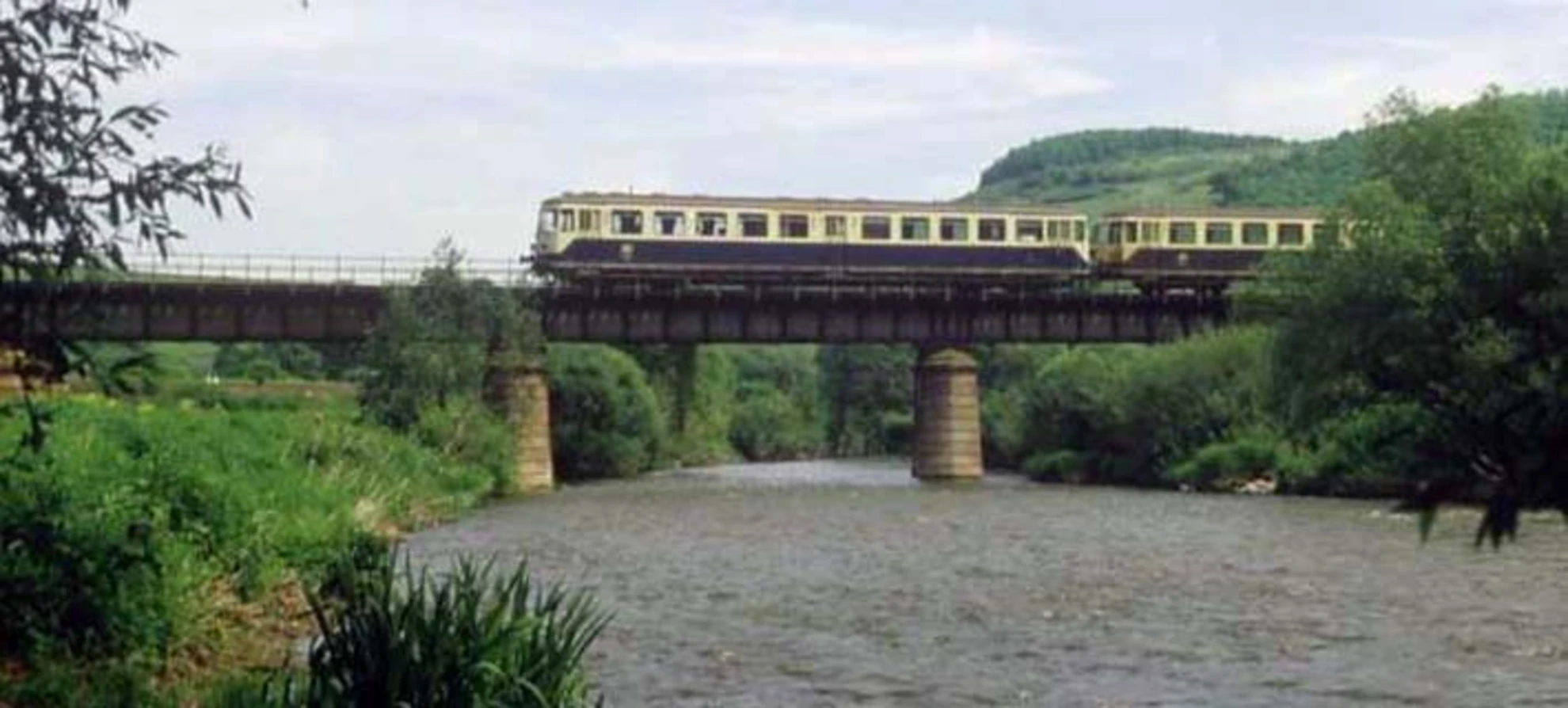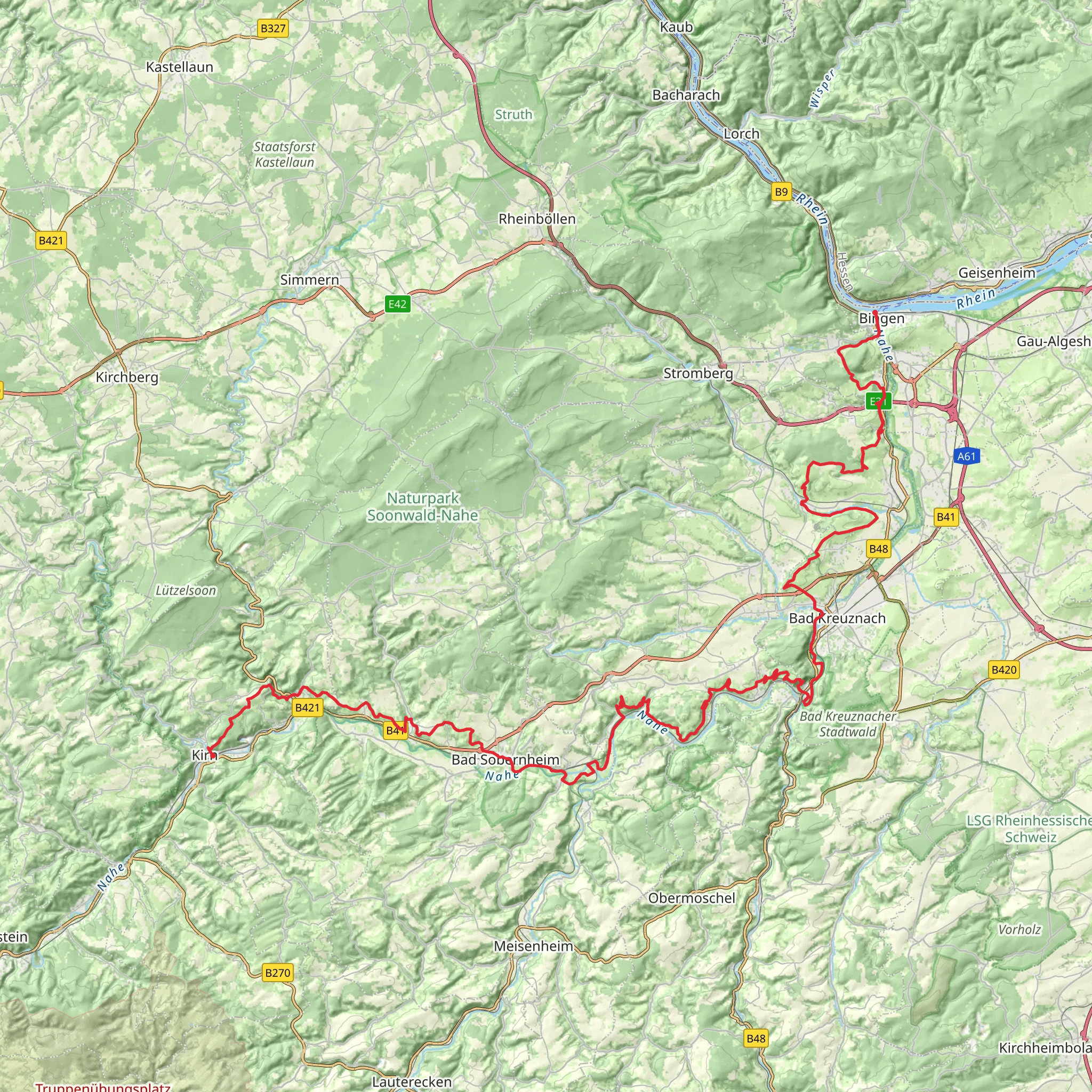Download
Preview
Add to list
More
94.9 km
~5 days
1798 m
Multi-Day
“Experience the fusion of natural splendor and historical charm on Germany's scenic Weinwanderweg Rhein-Nahe trail.”
Embarking on the Weinwanderweg Rhein-Nahe, hikers will traverse approximately 95 kilometers (about 59 miles) of picturesque landscapes in the heart of Germany's wine country. With an elevation gain of roughly 1700 meters (approximately 5577 feet), the trail offers a medium difficulty level, suitable for hikers with some experience.
Starting Point and How to Get There The journey begins near Kirner Land, a region known for its scenic beauty and cultural heritage. To reach the trailhead, travelers can drive to the vicinity of Kirner Land or use public transport. The nearest train station is in Kirn, from where you can take a taxi or a local bus to the starting point of the hike.
Navigating the Trail As you set out, the HiiKER app will be an invaluable tool for navigation, providing detailed maps and waypoints to ensure you stay on the right path. The trail is well-marked, guiding hikers through vineyards, quaint villages, and along the banks of the Nahe River.
Landmarks and Scenery The Weinwanderweg Rhein-Nahe is not only a journey through nature but also a passage through time. The trail meanders past ancient castles, historic monasteries, and ruins that tell tales of the region's past. Notable landmarks include the Ebernburg Castle, which stands as a sentinel over the Nahe Valley, and the Rotenfels, a striking natural rock formation that offers panoramic views of the surrounding vineyards.
Viticulture and Wildlife The trail is a celebration of viticulture, with opportunities to visit local wineries and taste the region's renowned Rieslings and other varietals. The changing seasons bring different hues to the vineyards, from the lush greens of summer to the golden tones of autumn. Wildlife enthusiasts may spot a variety of birds, including the rare peregrine falcon, as well as deer and foxes in the more secluded areas.
Historical Significance The Rhein-Nahe region has a rich history of winemaking, with traditions that date back to Roman times. Hikers will encounter historical sites that reflect the area's long-standing connection to viticulture, including old wine presses and ancient vineyard terraces.
Preparation and Planning Before setting out, hikers should ensure they have adequate supplies, including water, snacks, and a first-aid kit. The trail can be completed in sections, with accommodations available in the villages along the route for those who wish to take their time and soak in the local culture. It's recommended to plan overnight stays in advance, especially during the peak season.
Seasonal Considerations The best times to hike the Weinwanderweg Rhein-Nahe are spring through fall when the weather is mild and the landscape is at its most vibrant. Each season offers a unique experience, from the blossoming of flowers in spring to the harvest season in late summer and early fall.
Remember to respect the natural environment and the local communities you'll be visiting. Leave no trace, and be mindful of the impact your journey may have on the wildlife and the ecosystem.
Comments and Reviews
User comments, reviews and discussions about the Weinwanderweg Rhein-Nahe, Germany.
4.5
average rating out of 5
6 rating(s)

